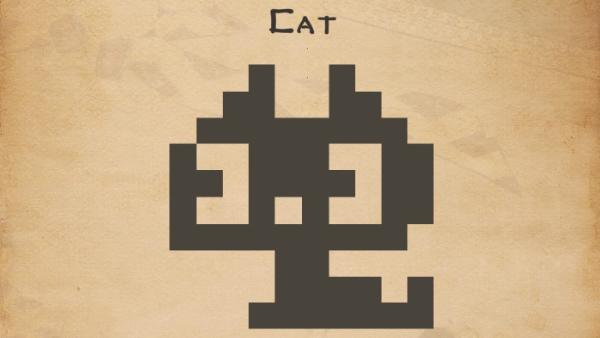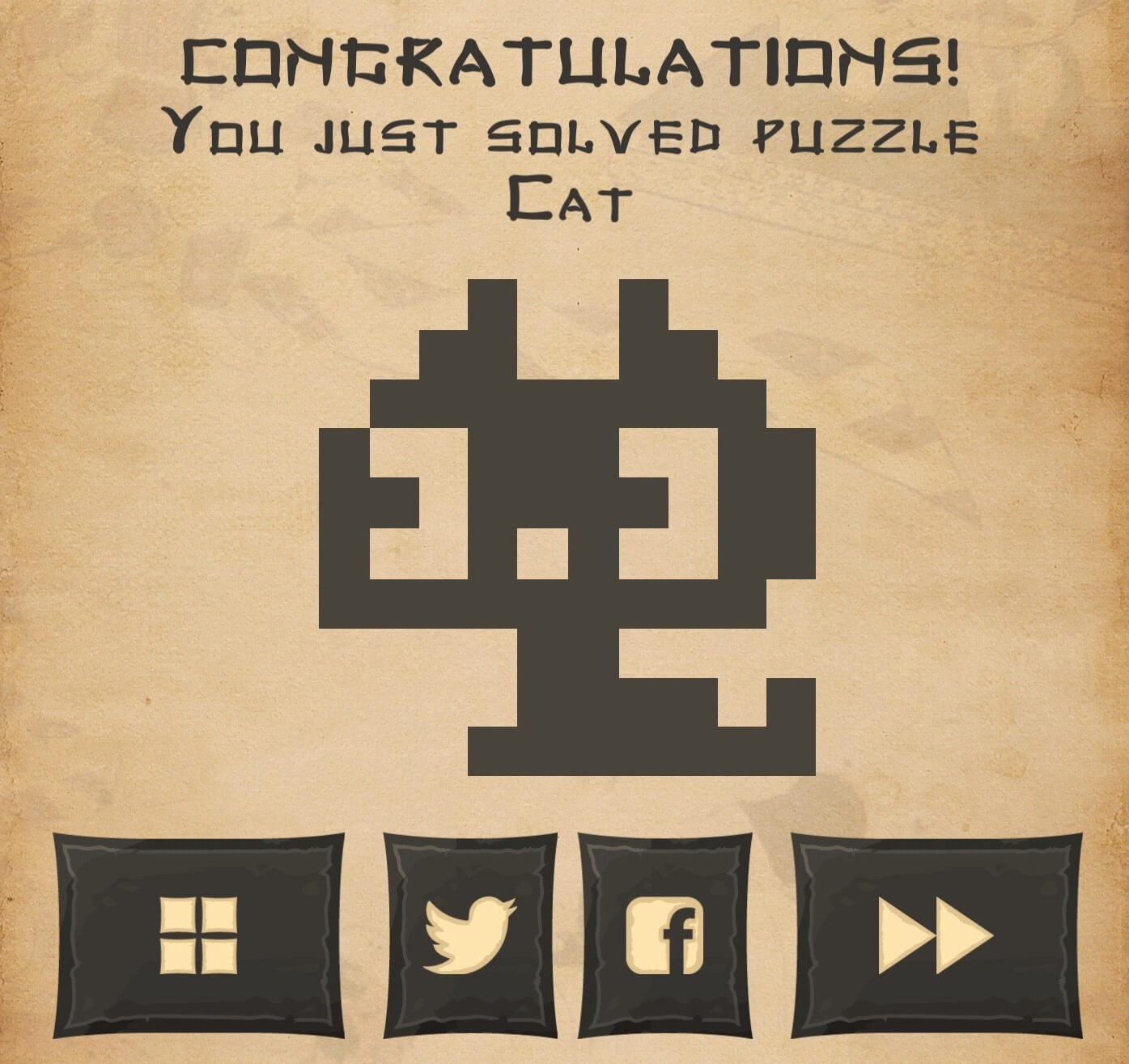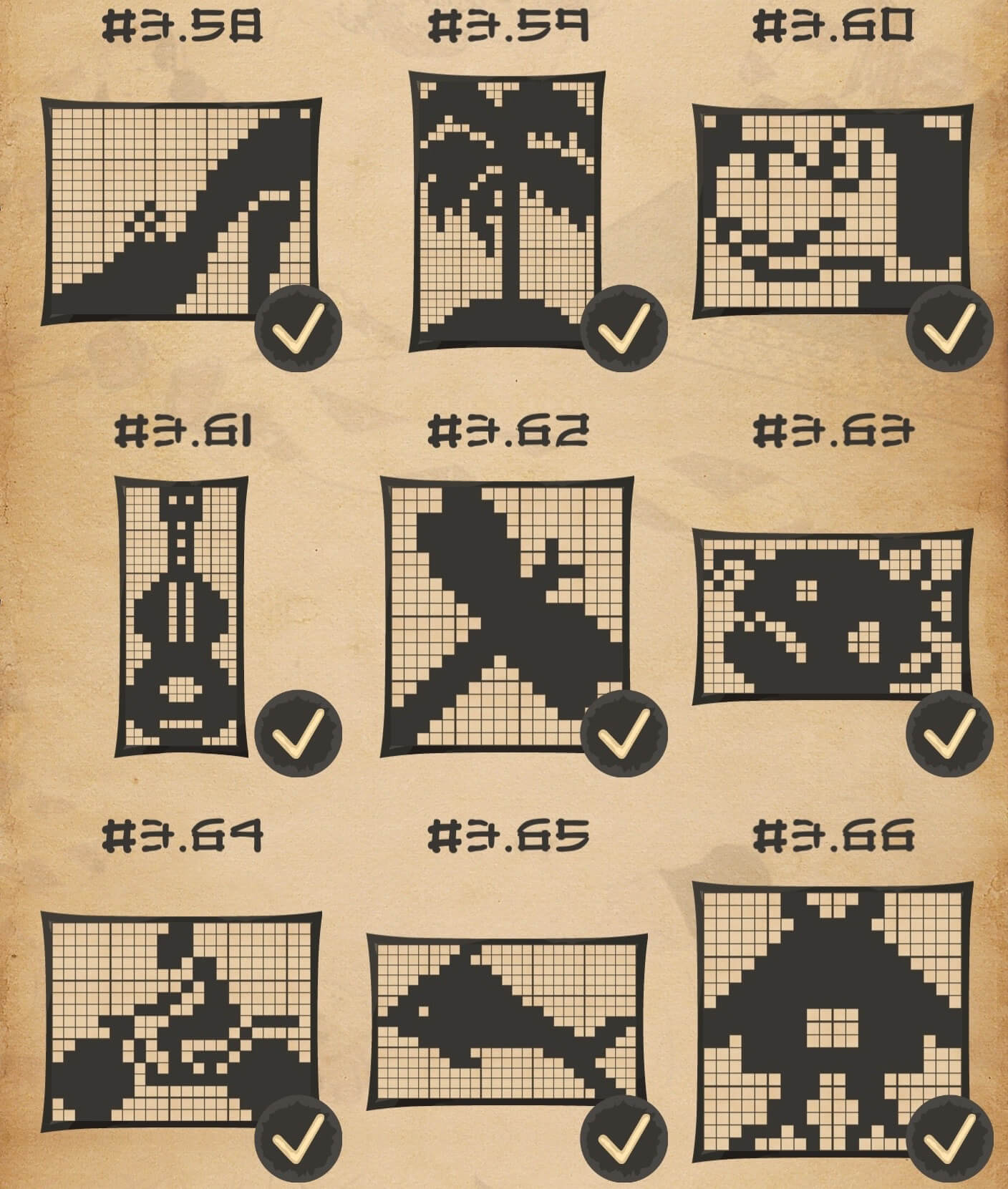A puzzle game I like to play has given me some insights on an approach to studying the gospel of Jesus Christ, and particularly the history of the Church in relation to it.
August 21, 2016

The Resolution of our Understanding
All of us need to rest our brains every now and then. It might take the form of sitting down to watch a show or it can involve switching tasks. To rest my brain by doing something different, I’ve been using an app for nonogram puzzles.
What is a Nonogram
A nonogram, sometimes called a picross, is a puzzle that has a series of rows and columns with numbers on the sides of a grid. The numbers indicate how many pixels or squares should be filled in sequence before a space occurs.

The number of spaces in between numbers is unknown and part of the fun is figuring out which pixels should be filled in and which shouldn’t.

After you figure it out, the pixels combine to form a picture.

Part of the fun is starting to fill in the squares and guessing what picture you are creating. There have been many times when I’ve filled out most of a nonogram and still not really understood what the image represented. It’s only when I step back from the individual pixels I’ve been trying to fill in that I start to recognize the image.
Examples of Nonograms
Here are a few examples. Play the first of each video to see the pixels being filled in. Then try to guess what it is before you play the second.
Example 1
Make your guess then play the next video
Example 2
Make your guess then play the next video
Example 3
Make your guess then play the next video
While the grids and the resulting images start out very simple at first, as your skill level increases, you can move on to larger and larger grids with much more complexity.

As the resolution increases, so does the beauty and intricateness of the final image.

Even with smaller grids, I’ve found a few strategies that help when trying to solve these puzzles.
Strategies for Solving Nonogram Puzzles
First, don’t make assumptions you aren’t willing to reverse. Even when I don’t completely recognize what an image is going to be, it’s hard being stuck without making progress. Sometimes I go back and forth not knowing what move to make next. It’s at that point that I’m tempted to fill in pixels that I think should be filled in. The problem with doing this is that I can be completely wrong about my assumption. If I made an assumption early on, I often have to undo a whole series of pixels I filled in. Occasionally I’ve been unable to track back to that point and I just start over. It’s best to stick with what you know for sure and be patient in discovering the certainties.
Second, the squares that aren’t filled in are just as important as the ones that are. In order to get to the pixels that should be filled in, sometimes I have to mark ones that I know are NOT filled in. In smaller grids, you can sometimes get away with not marking them, but in the larger ones, it is essential to mark them. Of course, without the contrast of filled-in pixels and empty ones, you wouldn’t have a final image worth looking at as well.
Third, be willing to review areas you feel you already examined thoroughly. Often one pixel placed in one area can have an impact in a seemingly disconnected area. As I fill in pixels, even just one, it may provide the clue to a pixel in another area that should be marked out or filled in. After I feel I’ve exhausted one area, I’ll work on another and then come back and see something I either missed, or have just one more step I see I can take.
Fourth, remember that the individual pixels are part of a greater whole. It’s sometimes difficult when you are stressing over individual columns and rows at a time. When it gets frustrating, I have to remember that I’m going to see an interesting image in the end. Carefully filling in a square at a time and marking ones I know won’t be filled is part of the process and occasionally I’ll step back and see my progress. It doesn’t remove the carefulness I must exercise, but it does provide the motivation I need to keep going.
Studying the Gospel
It should come as no surprise that this is an analogy for learning about the gospel and Church history. If you feel like you already understand the comparison, there is no need to read on. Otherwise, let me explain.
First, don’t make assumptions you aren’t willing to reverse. At times I’ve made assumptions that turned out to be correct, but I’ve made many more that just haven’t been right. When it comes to Church history or gospel knowledge, further studies make it clear when my assumptions have been wrong, or at the very least, that I should remember they are only assumptions and not gospel fact. At times, I’ve had to “reboot” a little bit and go back to what I do know for sure. I think this is OK, so long as we recognize when we are making assumptions and not try to hold on to those same ideas when we are shown they are not right. People have left the Church because of assumptions that just aren’t clear yet. Some faithful people in the Church also hold on to assumptions, claiming that they are doctrine, when those things have not yet been revealed. Assumptions can be dangerous. We should accept what we don’t know and have the patience to discover the truth in the due time of the Lord.1
Second, knowing what isn’t true can be just as important as knowing what is true. Looking into the past is so often a very incomplete picture. We often have to be content with a very low resolution of understanding. But part of that understanding can include knowing what isn’t true, or at the very least, what is unsubstantiated. Sources matter and a comment thread in a blog probably shouldn’t sway us to make assumptions that are incorrect. Focus on what is known about truth and untruth alike.2
Third, re-examining is part of learning the gospel, line upon line, precept upon precept. As we add each pixel of knowledge, we should re-examine the pixels we’ve already laid in other areas as well. Areas that seem to have reached a dead-end previously can be opened anew to our understanding. Or a new point may help make us aware when we have unwittingly made an incorrect assumption.3
Fourth, remember that individual pixels of gospel knowledge or Church history are part of a greater whole. Some things don’t necessarily make sense individually. But when we examine things as a whole, the patterns that seemed incoherent as focused on a single part become clearer.4
A Tapestry of Mysteries
I know when I start a nonogram that there is an interesting, delightful image to be found after I’ve intently placed every pixel in the puzzle. How do I know? I’ve experienced it many times. Concerning the great gospel picture, I feel like it is a giant tapestry of the wonderful mysteries of God.5 Every puzzle I complete, every image I reveal, represents only a single pixel in this larger whole of God’s understanding. As I gain experience and see the beauty of each individual image, the resolution of my understanding is increased, and I continue on my personal journey to understand the path to becoming like my Father in Heaven through the example of my Savior, Jesus Christ.
Written by Ken Torgerson on August 21, 2016
